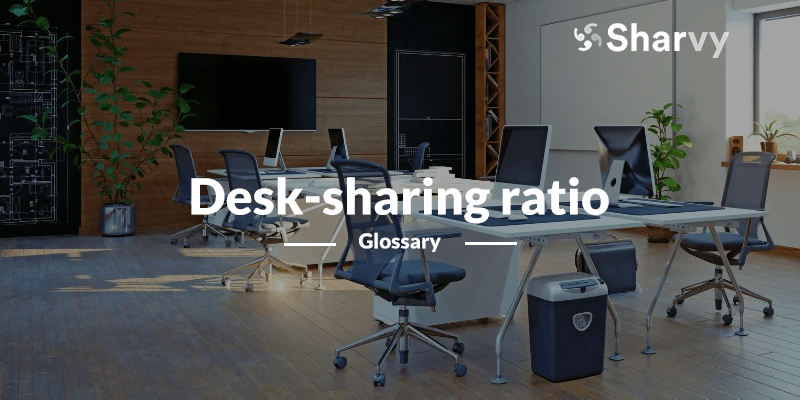Desk-sharing ratio: what is it? – Definition
Also known as the “flex office rate,” is the ratio between the number of available individual workstations and the number of employees in a company.
In other words, a company may set a desk-sharing ratio of 0.7. So, it will only offer seven workplaces for every ten employees.
It should be noted that the calculation of it becomes necessary when a company chooses to transition to the flex office. It should be remembered that this is essential, mainly because this new organization of work means that a specific workstation is no longer allocated to an employee.
In correlation, and as part of this real estate optimization, the company will regularly decide to reduce the necessary office space. However, remember that this reduction is not proportional to the desk-sharing ratio. Other parameters must be taken into account. For example, the efficiency of the building, the level of space density, the occupancy rate, etc
What are the factors influencing the calculation of the desk-sharing ratio?
Of course, the calculation of the desk sharing ratio depends on many factors.
The first obvious factor influencing the calculation of your desk-sharing ratio is your teleworking policy. Not least because it no longer makes sense to keep an individual office assigned to an employee since they will not be present on-site, full-time. Therefore, it is justified to consider the average number of days your employees telework.
However, remember that the desk sharing ratio that can easily be chosen (without teleworking) is 0.8. That is eight workstations per 10 employees. This can be implemented with a “classic” company cycle (business trips, time off, illness, absences, etc.).
The second factor that directly influences the calculation of your ratio is your “business” categories. But also the profiles and uses of each one. If your company employs mainly salespeople and/or consultants, it is clear that a desk-sharing ratio below 0.7 will be justified. That is seven workstations per 10 employees. The main reason is that this “professional” category is regularly on the move. As a result, they are rarely together in the office.
Finally, the third factor that can also influence your desk sharing ratio is the evolution of your indicators. Monitor their growth to meet your current and future needs consistently. For example, evaluate the average occupancy rate of your workspaces over the last few months. Observe the remote/presence-based organization of your employees. Take stock of the number of employees, anticipate any growth in numbers, etc.
By relying on these three factors, you will more easily determine a ratio consistent with your current and future needs. In addition, you are putting all the chances on your side to excel in your transition to the flex office.
What are the advantages of calculating it?
Although the flex office generates disruptive and destructuring rules about the habits traditionally anchored in companies, its implementation and the calculation of a desk-sharing ratio bring many advantages for the company.
On the one hand, it allows the company’s spaces to be rethought in such a way as to improve the QWL of employees. The square meters freed up by saving workstations can be used to create new spaces. This can be used to make phone calls without disturbing colleagues, meet in groups, or work quietly.
On the other hand, if the company’s objective is to reduce its costs, implementing a desk-sharing ratio can enable it to make savings. This can be done on rent, charges, and/or taxes. In particular, reducing the number of workstations can save between 15% and 35% on floor space. But, of course, these gains will only be practical if it gives back the square meters it has gained.
In parallel, transitioning to a flex office and implementing a desk sharing ratio may allow the company to move to more environmentally friendly buildings and/or in a city center. It may choose smaller premises, but be close to transport and service infrastructure.
Finally, it can also be an opportunity to combine real estate optimization with a new work organization. This will impact employees’ health, well-being at work, and motivation. Therefore, it can be an opportunity to improve the company’s digital maturity and adopt various digital tools. For example, a workplace reservation tool allows each employee to organize himself well. In particular, by anticipating their week and their needs.

